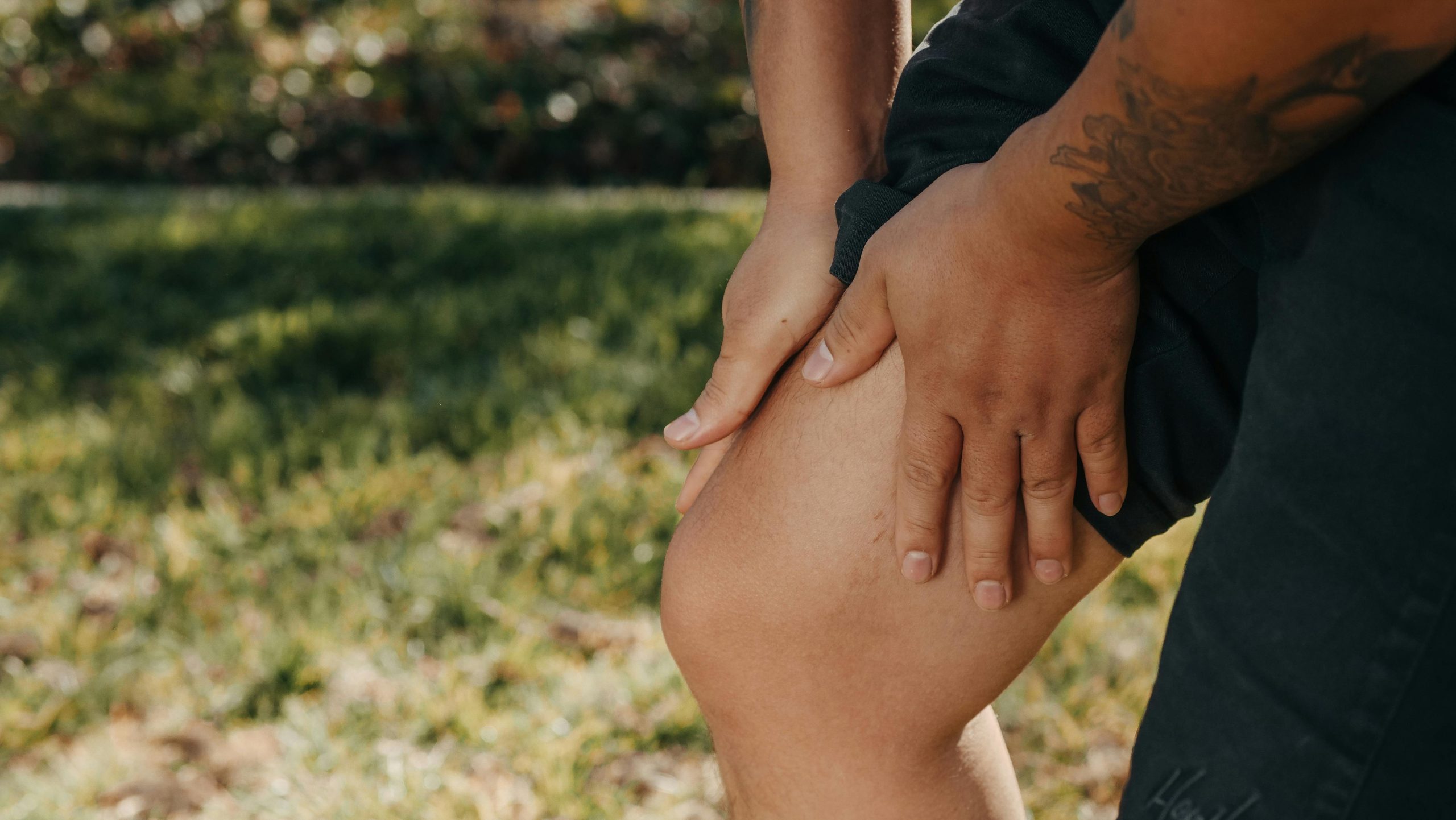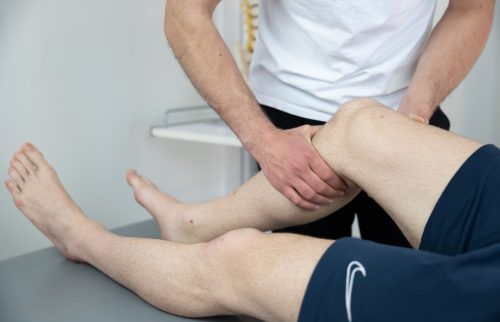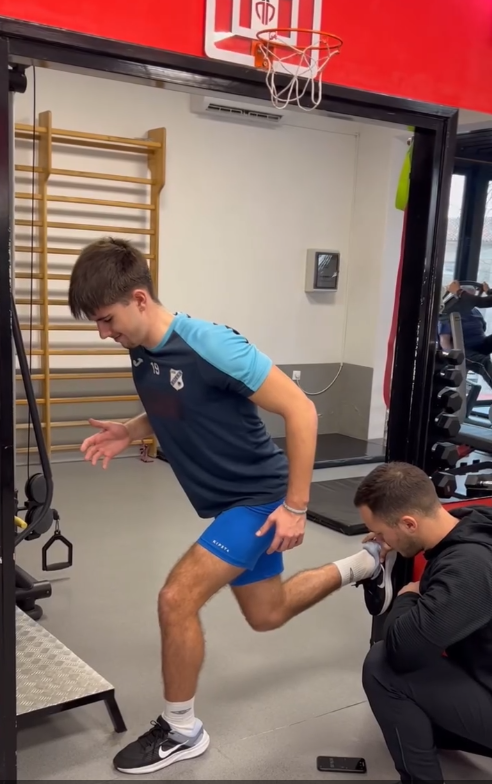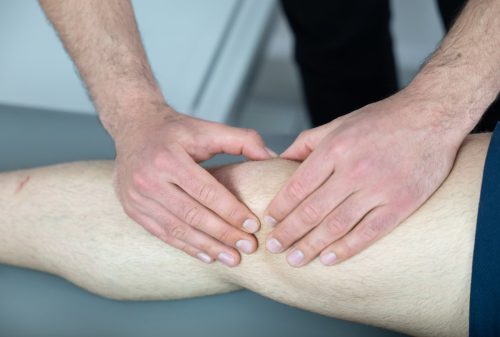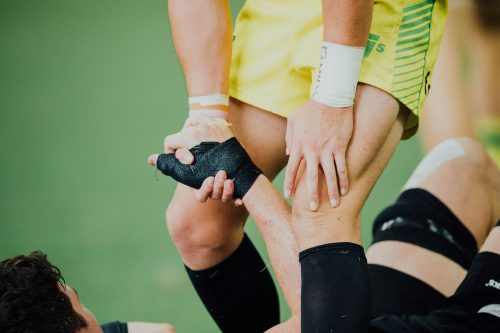Anterior knee pain is common in adolescents and young women, often with no clear diagnosis. Discover possible causes and treatment approaches using the holistic tension model.
Description
These conditions are most common in adolescence and the 20s, they occur somewhat more often in girls and young women. The history of the disease is non-specific in the sense that the pain appears spontaneously, is present for some time, and also stops without a clear reason, only to appear again. Sometimes the disturbance is more intense when walking downhill, sitting for a long time can provoke the disturbance, or getting up from a sitting position becomes a problem. During the examination, it is not possible to provoke pain, although sometimes squatting can be painful. In short, when we have ruled out all possible causes of pain in the front of the knee, we are forced to put aside the classic orthopedic search and try to see the problem from a different perspective.
There is an extensor (spring) mechanism on the front of the knee. It is an anatomically complex structure, about which we know a lot, but which still keeps some secrets. In its center is the round bone of the patella (or “cup”), which is embedded in the tendon of the large thigh muscle (quadriceps). With its cartilage, it slides along the groove on the knee bone, acting as a movable lever. Its stability is additionally enhanced by a complex ligamentous system on its outer and inner sides, which receives additional cushioning with fat pads strategically arranged in places of greatest pressure. They are also a sensory mechanism, which, together with the sensors in the muscle and tendon, ensure timely muscle activation with the aim of stabilization and injury prevention. If there is no inflammatory process, pain to the touch, or signs of tissue damage on imaging, we consider the knee to be healthy, as far as we can judge.
Tension model
If we move a little further to the knees, we will see that knee extension during walking, running, standing up from a sitting position and other daily and sports activities is a complex action that also involves the ankle, hip, the entire spine, or at least its lower part. This means that knee extension is a more complex action than the movement itself that occurs locally in that one joint. Logic, but biomechanics dictate that the weakness of the muscles that move the remote parts of this large mechanism, the limited mobility of the remote joints or some other disorder outside of what we narrowly consider the knee joint can, and in a large number of cases, at least partially affect the appearance of overstrain in the knee, while in a smaller number of cases and the only cause of disturbances. The age of adolescence and early twenties, when these kinds of disturbances are the most common, brings its specificities in terms of still open growth zones, biological tissue specificities (under the influence of a large amount of growth hormone, estrogen and testosterone, along with some others), and habitual peculiarities related to the mentioned age. All this requires a detailed examination of the entire locomotor system, a broad history of illness and behavior, as well as the experience of a specialist doctor or physiotherapist in diagnosing such conditions, and then creating a plan for their rehabilitation. Namely, the search for one or more “wheels” in a large kinetic chain that do not “turn” in accordance with the whole can be a real detective endeavor worthy of the great Sherlock Holmes or Agatha Christie.
From our experience, the most common causes of non-specific anterior knee pain are:
-Long sitting with the knee maximally bent (sitting on the foot, for example)
-Poor running or walking technique
-Stiff hips
-Scoliosis or poorly movable lumbar part of the spine
-Inadequate sports shoes
-“Shortened” muscles of the back of the thigh, as a result of rapid growth or inadequate training
-Joint laxity increased by the type of training
-Physical inactivity
-Previous old and inadequately repaired knee, foot, hip or back injury
-Initial rheumatological process
-And a long list of rarer causes
In short, pain from the front of the knee, which cannot be given a clear orthopedic diagnosis even after extensive diagnostic work-up, requires a view through the prism of a holistic tension model, setting up a hypothesis, and remediation through the resolution of observed deficiencies. The type and length of treatment varies over a large time frame from a few weeks to a year or the end of processes related to physical growth. Sometimes, and for entrenched habitual reasons such as tics and/or unconsciously repeated movements, the help of a psychologist in the treatment process is necessary.

